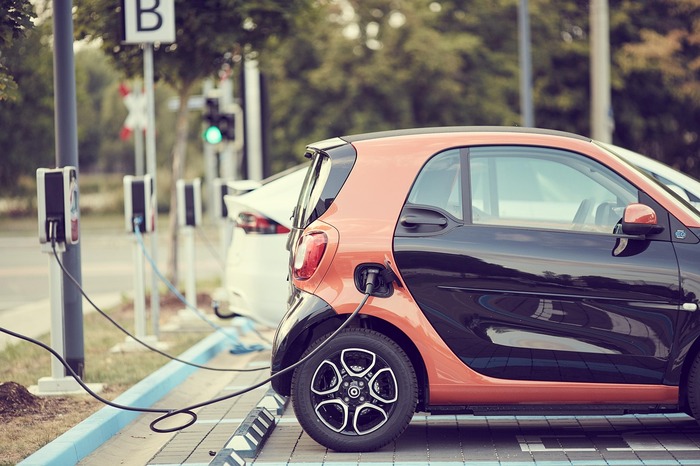Ember’s analysis showed that EV charging infrastructure has to be aligned with the availability of clean electricity from renewable sources
Renewable energy and electric vehicles are both growing in India. Aligning both can result in genuine emission reduction. Following the National Electricity Plan (NEP-14), if India is able to achieve its renewable capacity ambitions by 2032, then just 3% of wind and solar capacity targets can power the country’s entire electric vehicle (EV) fleet.
This conclusion was drawn in a new report by the energy think tank Ember, which used India’s EV stock projections for 2030/2032 for its analysis.
According to the report, India’s EV charging demand will hit 15 GW by 2032 — or 3% of NEP-14’s wind and solar capacity target of 486 GW by the same year.
But in order for this to happen, there needs to be changes in national policies. More specifically, EV charging infrastructure has to be aligned with the availability of clean electricity from renewable sources, highlighted the report.
Renewable tariffs for EVs
Ember’s analysis selected 10 Indian states — Assam, Bihar, Gujarat, Karnataka, Madhya Pradesh, Maharashtra, Odisha, Rajasthan, Tamil Nadu and Uttar Pradesh — factored around total EV sales in FY25.
The report found that EV sales in India have leapfrogged by 11x between FY2020 and FY2025, and 22.3% of EV charging, nationally, is done through clean energy. However, it is more in some states compared to others.

States with more hydro power like Karnataka, Madhya Pradesh, and Uttar Pradesh, around 37.6%, 23.8%, and 18.3% of electricity, respectively, come from clean sources. On the other hand, Gujarat, which has more wind and solar, but limited hydro, has only 12.3% clean electricity, according to the report.
“Today, most EV charging happens at homes in the evening and night, when fossil fuels dominate the power mix. Using measures such as Time-of-Day (ToD) tariffs while expanding public charging stations, especially at workplaces and commercial hubs, will enable more daytime charging and greater use of clean energy,” says Ruchita Shah, Energy Analyst at Ember.
States such as Assam, Bihar, Gujarat, Madhya Pradesh, Maharashtra, Odisha, Rajasthan and Tamil Nadu have already introduced solar-hour ToD tariffs for EVs, found the report. Rebates are provided on EV charging during solar hours, while surcharges happen during peak hours.

The report also advocated for better data collection on EV charging to improve policy planning.
“Establishing mechanisms to collect and aggregate EV charging data while ensuring user privacy can equip electricity distribution companies with critical insights to forecast EV-driven electricity demand and effectively operationalise ToD tariffs,” says Shah.
Incentivising clean energy charging
The report suggested that simply promoting EV charging when renewable energy is available on the grid, like solar energy during daytime, will go a long way in decarbonising the transport sector.
Ways to achieve this would include implementing and strengthening ToD tariffs to incentivise charging during solar hours, especially at public charging stations. Alternative charging models such as solar-powered EV charging stations and solar-plus-storage systems would also be helpful.
In India, the transport sector is responsible for 14% of energy-related direct emissions, while road transport contributes more than 90% of the transport sector’s greenhouse gas emissions, cited the report.
If ample clean energy can be provided for EV charging, which is projected to grow nine-fold between 2024 and 2030, the decarbonisation gains would be significant, the report stated.
“States with higher EV adoption can view the EV sector, among others, as a strategic lever to stimulate demand for clean electricity procurement. Both the centre and states are providing purchase incentives, which not only accelerate EV adoption, but also hold potential to facilitate greater integration of renewable energy and will contribute to creating much-needed demand-side flexibility for the grid,” said Shah.
About The Author
You may also like
Non-Fossil Fuels Generates One-Third of India’s Electricity in 2025
India on track to achieve 2030 clean energy target
India to add 45GW solar capacity in FY 2026: Study
China’s Overseas Clean Tech Manufacturing Investments Surged 80% Since 2022: Report
Government Proposes for ALMM Expansion for Solar Backward Integration

